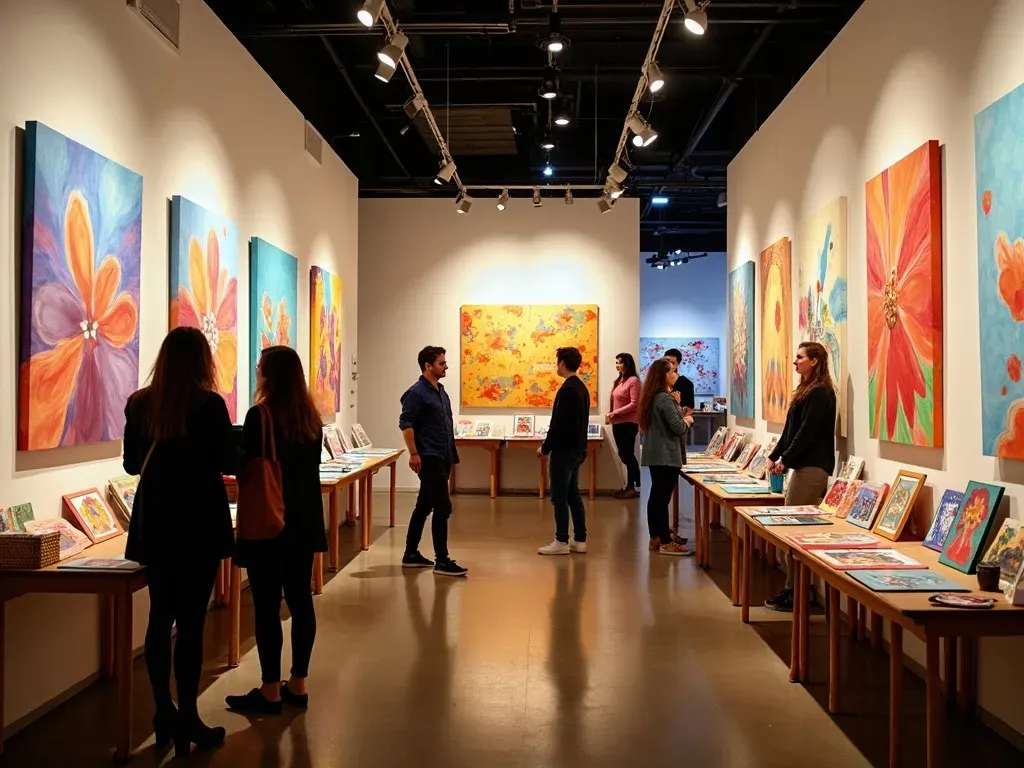Artworks simple don’t have to be boring or uninspired! In fact, many artists find beauty and creativity in simplicity. Simple art pieces can be just as impactful as complex masterpieces, allowing beginners and experienced creators alike to express their emotions and ideas without overwhelming complexity. The beauty of art lies in its ability to transcend detail and speak to the viewer through the basics of form and color.
The Appeal of Simple Art
When discussing artworks simple or basic artwork, it’s essential to understand the appeal they have not just for budding artists, but for everyone. Here are some reasons why simple forms of art attract interest:
- Accessibility: Simple artworks are easy to understand and appreciate, making them perfect for art enthusiasts of all levels.
- Focus on Emotion: By stripping down to basic elements, artists can evoke feelings or thoughts without overwhelming the viewer with details.
- Creative Freedom: Simplicity allows artists to experiment with fewer variables, leading to innovative Techniques.
Table 1: Popular Simple Art Styles
| Art Style | Description | Notable Artists |
|---|---|---|
| Minimalism | Focuses on simplicity and purity of form. | Donald Judd, Agnes Martin |
| Abstract | Uses shapes, colors, and lines without recognizable subjects. | Wassily Kandinsky, Piet Mondrian |
| Line Art | Art created using only lines without color or shading. | Keith Haring, Pablo Picasso |
Exploring Simple Art Techniques
Creating artworks simple doesn’t mean there aren’t a plethora of techniques available. Below are notable methods to master simplicity in art.
1. Line Drawing
Line drawing is one of the most straightforward styles, where artists utilize lines to express movements and forms. The minimalist approach helps focus the viewer’s attention on the essence of the subject.
- Tip: Use varying thickness in your lines to give depth and dimension.
2. Monochrome Painting
Limited palettes can make a powerful statement. By using one color and its variations, artists can explore texture rather than color.
- Fact: Research shows that color influences emotions, and monochrome can create a calm atmosphere.
3. Collage
Using simple graphics or paper cut-outs can create stunning works of art. This technique encourages creativity in composition while remaining uncomplicated.
4. Doodle Art
Doodling transcends age boundaries, allowing anyone to create freely with little commitment. Doodles can evolve into impressive pieces when combined thoughtfully.
5. Nature-Inspired Pieces
The natural world offers an abundance of simple forms—leaves, flowers, and landscapes. Artists often find Inspiration in nature’s straightforward elegance.
List of Materials for Simple Art Projects
- Sketchbooks
- Pencils and erasers
- Watercolors or acrylics
- Quality paper
- Collage materials (magazines, scissors, glue)
Famous Simple Artworks
Across history, several artists have embraced simplicity in their work, leading to some of the most recognized pieces in the art world.
Key Examples Include:
-
"Composition with Yellow Lines" by Piet Mondrian
- An iconic example of abstract art using just colors and lines.
-
"Untitled" by Donald Judd
- Minimalist work that removes any unnecessary elements, focusing on shape and form.
-
"Black Square" by Kazimir Malevich
- A radical departure from tradition, epitomizing the concept of removing everything except for the essence.
Quick Tips for Creating Artworks Simple
- Limit Your Color Palette: Stick to a few colors to concentrate on shapes and compositions.
- Draw Inspiration from Everyday Life: Sometimes the best ideas come from common objects around you.
- Keep It Small: Try creating small art pieces. Smaller canvases can make it easier to focus on simplicity.
FAQs
Q1: Can anyone create simple artworks?
A1: Absolutely! Simple artworks are accessible for everyone, regardless of skill level.
Q2: What are some resources for learning simple art techniques?
A2: Websites like Skillshare and YouTube Channels provide excellent tutorials and tips for beginners.
Q3: How do I know if my artwork is too simple?
A3: Sometimes simplicity is subjective. If your piece communicates the intended message or emotion effectively, it has achieved its purpose.
Q4: What’s the benefit of practicing simple art forms?
A4: Simple art forms can enhance your foundational skills, helping you consolidate your understanding of composition, color theory, and shape—essential elements in more complex pieces.
Exploring the World of Artworks Simple
Whether you’re an aspiring artist or someone looking to appreciate creativity, simple artworks offer a unique space to explore self-expression. The beauty of simplicity in art is that anyone can engage with it. As you create or admire artworks simple, remember that the power of art often lies in its ability to connect and communicate.
By understanding and incorporating simple art techniques, enthusiasts can unlock their potential, experience various styles, and enjoy creative endeavors. The journey into simple art is both rewarding and enriching—so grab your materials, and let your imagination flow!
